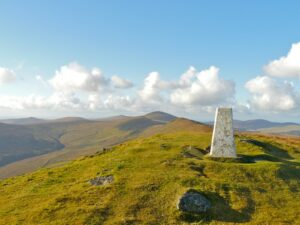New guidelines have been published to show developers how to build greener homes.
Published by the Wildlife Trusts, they aim to show how new developments can be built in a ‘nature-friendly way’.
More ‘nature-friendly’ homes will benefit local wildlife as well as create healthier and happier communities, putting less pressure on health and social services, the guidelines say.
They recommend that new housing is located in areas already well served by infrastructure and that they should avoid harm to the existing environmental assets of an area.
And new housing should be targeted at places where it can have a ‘positive environmental impact’.
The guidelines recommend developers use an up-to-date and well-informed ecological network map to identify existing natural features and habitats, alongside areas where new habitats are needed to restore ecosystems and help wildlife recover.
New housing developments and houses themselves should be designed to integrate space for both wildlife and people, as well as to reduce carbon emissions and minimise water usage. They should include permeable driveways to reduce flood risk and lighting designed to avoid disturbing wildlife.
The guidelines also recommend developers make provision to help bring local residents together to maintain shared spaces, grow food and understand the area they live in.
‘Innate value’
The document has been published at a time when housing is high on the political agenda.
The government recently committed to building a further 300,000 homes a year until 2022 and last month the department for communities and local government was rebranded as the ministry of housing, communities and local government.
‘We’re calling on the government and local authorities to build beautiful, nature-friendly communities in the right places,’ said the Wildlife Trusts’ living landscapes development manager, Rachel Hackett.
‘Over the past century we have lost natural habitats on an unprecedented scale,’ she added.
‘Yet nature has its own innate value. It also makes us happy and we depend on the things that it gives us. Our new guidelines show that it’s possible to have both, so people can enjoy birdsong, reap the benefits of rain gardens, which soak up floodwater, and plants that bees and other pollinators need to survive.
‘With good design the costs of doing this are a tiny proportion of the overall cost of a housing development, but represent a big investment for the future,’ said Ms Hackett.
The Wildlife Trusts are also calling for the current focus on numbers of new homes to be replaced by a visionary approach to where and how we build.
‘We should prioritise places for new housing that are already well served by infrastructure,’ added Ms Hackett.
‘We should avoid destroying wildlife sites and locate new houses in places where they can help to restore the landscape and aid natural recovery.
‘It’s possible to create nature-friendly housing by planting wildlife-rich community green spaces, walkways, gardens, verges, roofs, wetlands and other natural features. These gains for wildlife improve people’s health and quality of life too.’
Read the report here.
















